Monday, 2 June 2003
Distance 33 km
Duration 7 hours 20 minutes
Ascent 608 m, descent 671 m
Map 57 of the TOP 100 blue series (now superseded)
Topoguide (Ref 652) Sentier de Saint-Jacques-de-Compostelle Figeac/Cahors/Agen/Moissac
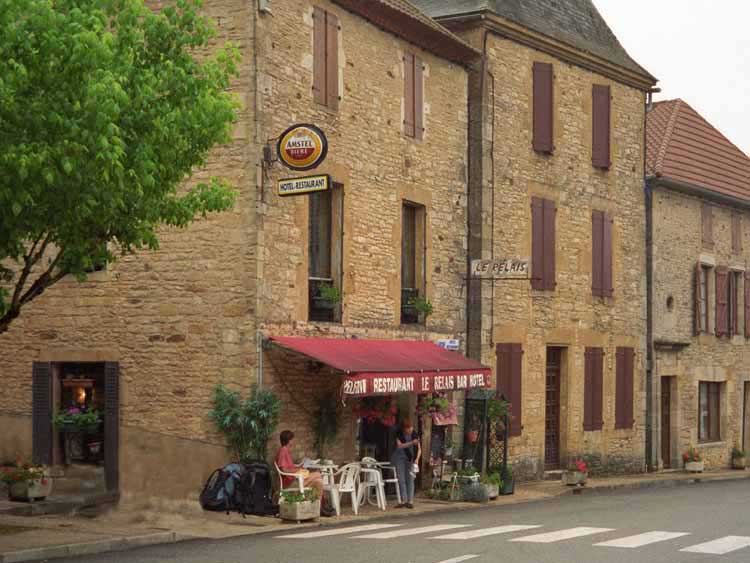
During the night there was a tremendous thunderstorm, with buckets of rain pounding the tent an inch above our noses, but we remained dry, demonstrating the wisdom of buying a top-quality tent.
A bowl of muesli was better than nothing and we set off at 7 am, past the deserted office. Another free night.
We went through tall, dark forests, where great walls of logs on the side of the track were like medieval defensive ramparts.
At length we emerged into sunny wheat fields at Peyremarchand and decided to take the little road beside the river, rather than the tortuous GR, to arrive at Frayssinet-le-Gélat.
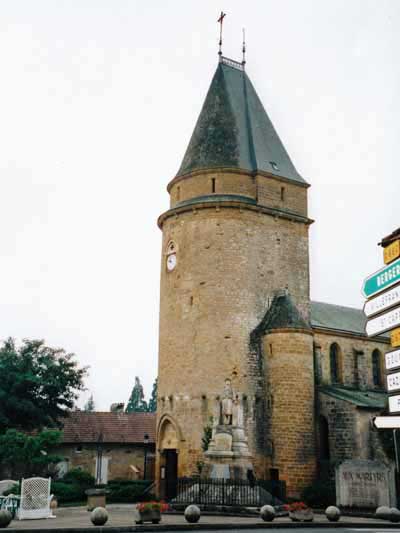
Our hopes of sustenance were richly satisfied at the bar, where we had large coffees and a slice of fruit tarte, surrounded by flowers on the footpath.
Across the road, in front of the church, there was the usual war memorial, with its heart-breaking list of young men lost in the Great War, and another memorial to civilian victims of a massacre by the retreating German troops in 1944.
Back in boots and feeling lively, we strode on through fields of corn, chestnut woods and vines, until we reached the village of Montcabrier, perched in the forest above the river Thèze.
It retains the square plan of a bastide town, but these days its former importance as an outpost of the French monarchy is visible only in the ornamentation of some of the ancient honey-coloured houses and in remnants of the curtain wall.
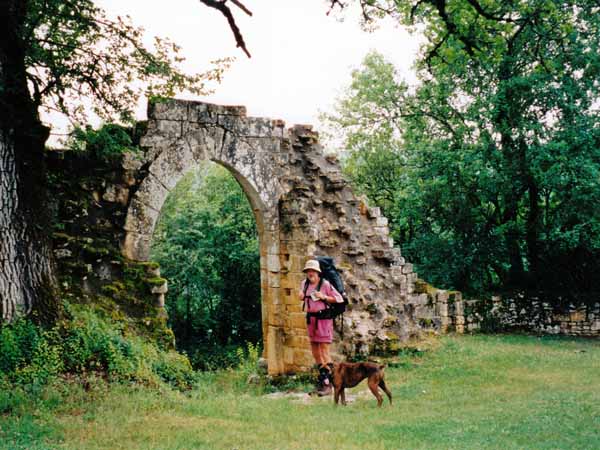
Nevertheless, it is doing better than its bitter rival across the valley, the English bastide of Pestillac, which is now a ruin.
Despite what the Topoguide said, there was neither shop, bar, restaurant nor camping in Montcabrier and a miasma of decay hung in the air. Our plan to stay there for the night had to be comprehensively revised.
We ate our lunch in the square, discovering that the little round loaf we had bought in Frayssinet was actually raisin bread, which tasted odd with sausage and camembert.
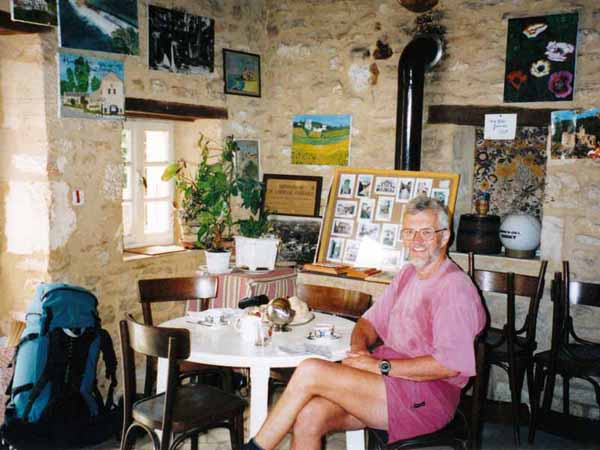
A controlled fall down a stony track brought us to the river and not long afterwards we came to Saint-Martin-de-Redon, tiny but, unlike Montcabrier, capable of ministering to the thirsty traveller.
The cafe was the front room of an old couple’s cottage and our hosts sat with us while we drank our coffee, discussing topics such as the iniquity of American foreign policy and the unwelcome infiltration of the English into the area. The only thing they knew about Australia was that fires had swept into our capital city last year.
The last leg of the day’s journey took us over a forested rise to the Lot river, which we crossed to enter Touzac. This village occupies a tight loop of the river and seems to have been forgotten by the modern world. This sounds picturesque, but it wasn’t.
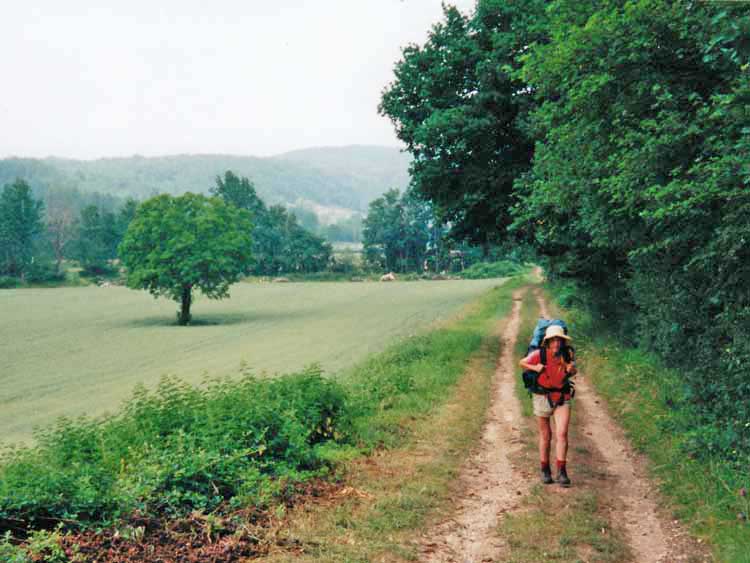
An air of poverty and hopelessness pervaded the place, which had no shops and only a dark, grimy bar. Luckily we found our way to a pleasant camping ground about a kilometre upstream, run by a Dutchman (the Ch’timi, named after the northern dialect).
After showers we slept under our wet washing, which was strung between two trees high above the river.
Our host told us that the only place to get a meal in the vicinity was a couple of kilometres away, on the other side of the village, which was not the best news, but the alternative was a second night without dinner, so we set off willingly enough.
As we arrived at the Source Bleue, a woman in an apron, carrying a potato-masher, hurried across the road. I said that we had come to dine at the restaurant and her shocking reply was that we coudn’t – it was closed on Mondays.
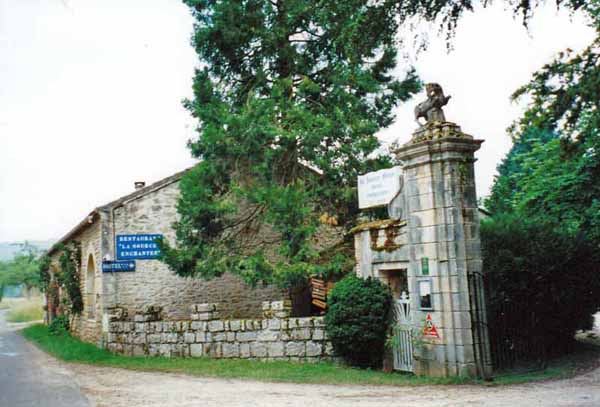
Then, looking at our faces, she explained that the place was also a hotel and they were actually having a residents-only dinner, which we could join in.
An extra table was set on a deck surrounded by gardens, and although we only had the main course, it was a real treat – pork with prunes, mashed potato and other petits legumes, with a bottle of rosé.
There is a spring on this spot and the present family have lived here for 400 years. Our fellow diners looked as if they were all members of the minor European nobility, beautifully groomed and clad in evening dress, but we were treated with the same care and courtesy in our shapeless walking clothes.
Our hosts even wanted to drive us back to the camping ground at the end, but we declined the offer.
Previous day: Gourdon to Cazals